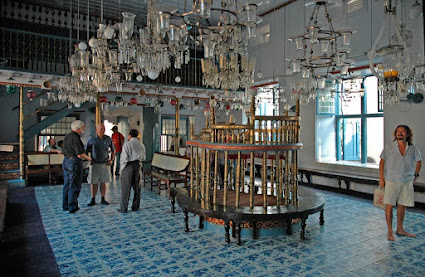Pardesi Synagogue, Mattancherry: A Timeless Heritage of Kochi
Lying in the locality of Mattancherry, Kochi, the Pardesi Synagogue is a fascinating testimony of the Jewish presence in India. This Synagogue was originally called Cochin Jewish Synagogue; it is the oldest Synagogue among the active ones in the Commonwealth of Nations. Given all these, it is a must-visit, especially for anyone keen to tour the area of Kerala that is culturally, architecturally, and historically diverse.
History of the Pardesi Synagogue
The Pardesi Synagogue was built in the year 1568 by the Malabari Jews – Jewish traders who arrived in Cochin as early as 500 AD. It was constructed alongside the Mattancherry palace which was granted to the Jews by the Raja of Cochin. Through so many years synagogues have been passive observers of historical events such as the appearance of European colonisers and changes of powers.
The Pardesi Synagogue of the city was partially destroyed in the 16th century by the Portuguese who captured Kochi. But the town was reconstructed later in the year 1664 by the Dutch who had subsequently wrestled the territory from the Portuguese. Since then it is used by the Jewish people for worship and other activities in Kochi.
Architectural Marvel of the Synagogue
The structure of the Pardesi Synagogue amalgamation of the traditional Kerala style with the style of colonial period. The construction is fluent and the decoration is rather plain; the buildings’ walls are plastered with whitewash, roofs are tiled and made with a slight pitch; and windows are arched. This building has custom-made Belgian glass chandeliers, Chinese hand-painted tiles, and wooden beams carved to extreme detail inside the synagogue.
The floor of the synagogue is unique in that it consists of several hundred 18th-century Chinese porcelain tiles. They were all different, and the shapes and designs – pale blue and white – were perfectly clean as if they had been made only recently. The structure also has a magnificent teak ark that covers the Torah scrolls that are used in the service.
The building also houses one of the oldest clock towers in the town that is said to have been constructed in 1760. The tower has four facades with clocks – a symbol of tradition and the continuous existence of the synagogue in the area.
Cultural and Religious Significance
Pardesi Synagogue is much more than a prayer of house it is the cultural centre for the Jewish people of India. It has served to be an active organ in maintaining the Jewish cultural and religious practices in Kochi for more than four hundred years. It is used to this day for worship, even though there are not many Jews in the city and hence few services are conducted.
The building, therefore, has a historical and cultural importance that has also contributed to its being a tourist attraction. Tourists from all over the world come to admire its architectural splendour and study the Jewish legacy in the region. The significance of the establishment has now been acknowledged by the government and is a protected monument under the Archaeological Survey of India.
Current Relevance of the Pardesi Synagogue
The Pardesi Synagogue stands even today as a testimony of Jewish presence in India. Though the Jewish people of Kochi have progressively declined, the synagogue stands as a testimony of their presence. It is also a mark of how diverse Kochi has been, for centuries the city has been home to people from diverse origins.
The synagogue holds a significant position in the development of cultural tourism in the State of Kerala. They are located in the well-known ‘Jew Town’ area of Mattancherry which hosts numerous antique stores, spice marts, and other tourist attractions. The area has a diverse multicultural society and people visiting the place benefit from its crucial historical importance.


Comments
Post a Comment